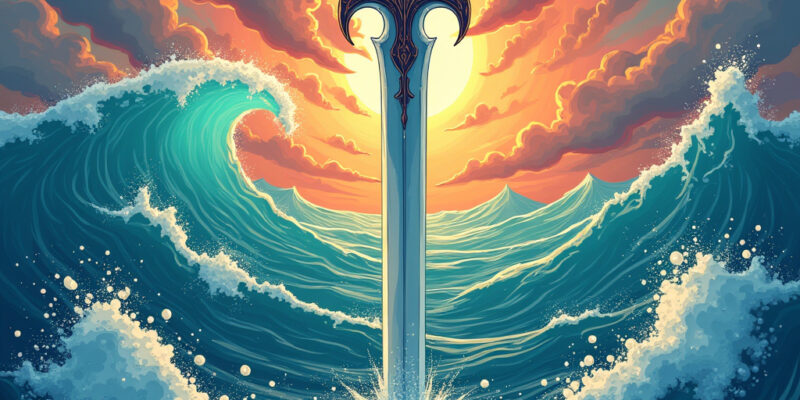Introduction to the Sword of the Sea
The phrase “Sword of the Sea” evokes images of adventure, bravery, and the mysteries that lie beneath the waves. It combines the imagery of a weapon, often associated with knights and warriors, with the vast and untamed ocean. This article explores the history, mythology, and cultural significance behind this captivating concept.
The Historical Context
The sea has always been a source of fascination for humanity. From ancient times, civilizations have ventured into its depths, seeking new lands, treasures, and knowledge. The term “sword” in this context often represents power and protection. Historically, seafarers wielded swords, not just as weapons but as symbols of authority and honor.
The Role of Swords in Maritime History
- Naval Warfare: Swords were crucial in naval battles, where sailors would board enemy ships and engage in close combat.
- Symbol of Rank: A captain or naval officer often carried a sword as a symbol of their leadership and status.
- Ritual Significance: Swords were sometimes used in ceremonies to bless ships before their voyages, invoking protection and good fortune.
Mythological Connections
The concept of a “Sword of the Sea” also resonates deeply within various mythologies. Many cultures have tales of legendary swords associated with the oceans, often imbued with magical qualities or linked to powerful deities.
Examples from Mythology
- Excalibur: While primarily associated with land, some legends suggest that King Arthur’s sword was once submerged in a lake, hinting at the mystical connection between swords and water.
- Poseidon’s Trident: The Greek god of the sea, Poseidon, wields a powerful trident, which can be seen as a ‘sword’ of the ocean, representing his dominion over the waters.
- Odin’s Sword: In Norse mythology, the god Odin possesses a sword capable of great feats, and the sea is often seen as a battleground for divine beings.
Cultural Significance
The “Sword of the Sea” is not just a metaphor; it has also influenced literature and popular culture. From epic tales to modern films, the imagery of swords and the sea has inspired countless stories.
In Literature and Film
- Adventure Novels: Many classic novels feature brave sailors and their swords, embarking on quests across treacherous waters.
- Fantasy Genres: Swords, often magical, are a staple in fantasy narratives, with many stories set in oceanic realms.
- Movies: Films like “Pirates of the Caribbean” bring the concept to life, showcasing swashbuckling adventures on the high seas.
Symbolism in Art
Art has long been a medium for expressing the themes associated with the “Sword of the Sea.” Artists have depicted epic battles, serene ocean scenes, and mythological figures, all intertwined with the imagery of swords.
Artistic Interpretations
- Paintings: Many paintings portray sailors brandishing swords, symbolizing courage and the spirit of exploration.
- Sculptures: Statues of mythological figures often include swords, representing strength and power over the sea.
- Modern Artwork: Contemporary artists continue to explore the relationship between the sea and swords, often using mixed media to convey their message.
Conclusion: The Enduring Legacy of the Sword of the Sea
The “Sword of the Sea” remains a powerful symbol that transcends time and culture. It represents the spirit of adventure, the allure of the unknown, and the strength required to navigate life’s challenges. Whether through historical accounts, mythological tales, or artistic expressions, this concept continues to inspire and captivate the imagination of people from all walks of life.




